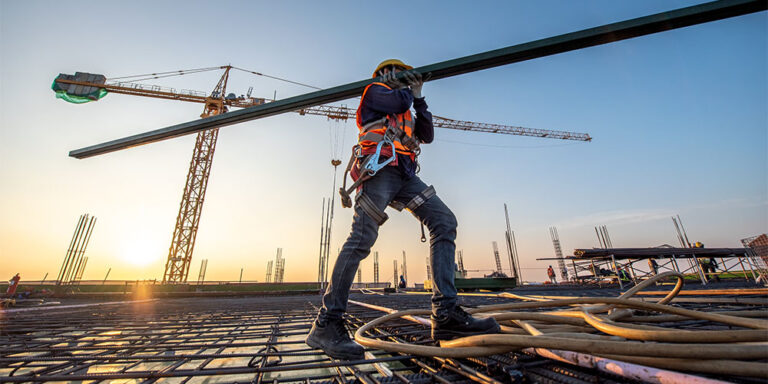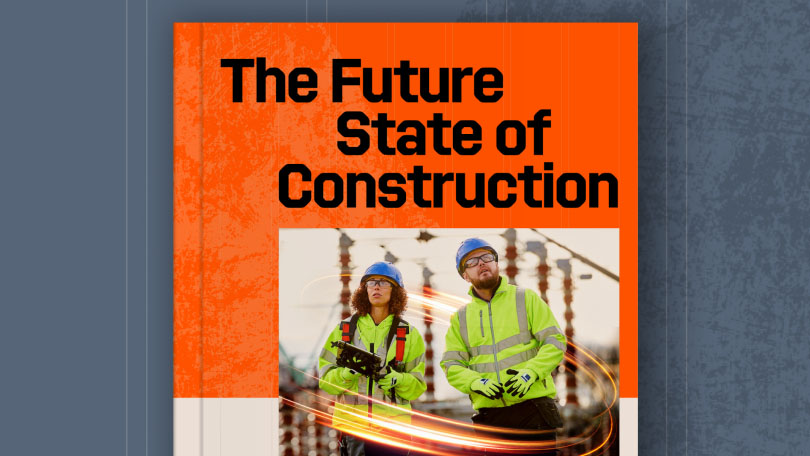— 7 min read
The Construction (Design and Management) Regulations 2015 Explained

Last Updated Aug 28, 2025

Tom Noctor
Senior Product Manager, International
16 articles
Having worked in construction for many years both on the ground as an electrician and in the design space in roles such as BIM Manager, I witnessed the highly inefficient operations of our industry and also the amount of waste generated from project delivery. I am a Digital Construction Technologies advocate @Procore Technologies, supporting and guiding the construction industry in adopting/utilising technology to deliver projects in a lean sustainable manner.

Nicholas Dunbar
Content Manager
62 articles
Nick Dunbar oversees the creation and management of UK and Ireland educational content at Procore. Previously, he worked as a sustainability writer at the Building Research Establishment and served as a sustainability consultant within the built environment sector. Nick holds degrees in industrial sustainability and environmental sciences and lives in Camden, London.
Last Updated Aug 28, 2025

The Construction (Design and Management) Regulations 2015 are also known as the CDM 2015 and the CDM regulations. They are set by the Health and Safety Executive (HSE) and apply to all construction projects in the United Kingdom. The most recent update to the regulations came into force on 6 April 2015. This updated and simplified the 2007 regulations to make them easier to follow for all types of construction projects. In simple terms, the regulation covers the “three Ds”:
- Definition of roles
- Duties
- Documentation
All projects — from large-scale, commercial buildings to small, private home renovation — must comply with the CDM regulations. Even if a company is not a construction company, it must still follow these regulations if it is working on construction projects.
Table of contents
Why were the CDM regulations created?
The CDM regulations were created by the HSE to create a safer working environment for construction professionals. They help companies manage risk and responsibilities on projects.
In 1991, The European Foundation for the Improvement of Living and Working Conditions estimated that around 60% of deadly accidents on construction sites were caused by decisions made before the project started. These deaths could have been avoided with better health and safety planning. Three years later, the first CDM regulations (CDM 1994) were published by the HSE to address this serious risk.
The main aim of the current regulations in the CDM 2015 is to improve health and safety planning, management and procedures on site. They help improve the welfare of people working in construction by making it the law to ensure people follow the rules correctly. The regulations apply to projects of all sizes and types, including new builds, demolitions, conversions, repairs, refurbishments, installations and more.
Learn about the future of the built environment - Read Procore's Future State of Construction report
Learn how contractors, subcontractors, and project teams can take advantage of new opportunities to boost efficiency and profitability over the next decade. Download the report to get your roadmap to the future state of construction.

Who is responsible for complying with the CDM Regulations 2015?
There are three main groups responsible for making sure that all construction work meets the regulations set out in the CDM 2015:
- Client
- Principal designer
- Principal contractor
Other contractors and subcontractors involved in a project generally don’t bear the same responsibility as the other groups, but they still need to ensure compliance with the regulations.
Client Responsibilities
The client has a list of responsibilities for complying with the CDM 2015, which are listed in full in Part 2 of the full CDM regulations document. Some of these include:
- Ensuring appropriate project management is appointed
- Appointing the right people and organisations
- Providing sufficient pre-construction information
- Making sure principal designers and contractors carry out their duties
- Ensuring the principal designer prepares a health and safety file
Principal Designer Responsibilities
The principal designer has a separate list of responsibilities, which can be found in Part 3 of the CDM regulations. These include, among others:
- Conducting risk assessments during pre-construction
- Coordinating health and safety risks and mitigation in design work
- Ensuring all designers comply with the regulations
- Communicating with contractors to help manage risk
- Preparing the health and safety file
Principal Contractor Responsibilities
The principal contractor is mainly responsible for overseeing health and safety during the construction phase of the project. Some of their other duties include:
- Communicating with the client and principal designer to keep operations safe
- Creating and implementing a construction plan that outlines health and safety requirements
- Making sure all contractors and workers have the skills and training they need to follow best practice
- Preventing unauthorised access to the job site
- Providing welfare facilities for workers and consulting workers
- Ensuring personal protective equipment (PPE) is available
Contractors and Subcontractors
Most of the responsibilities lie with the client, principal designer and principal contractor, but all contractors and sub-contractors must also follow the CDM regulations carefully. Their responsibilities include:
- Planning, managing and monitoring their own work in line with the regulations and risk assessments
- Ensuring all workers have the right skills, training and expertise
- Working with all stakeholders to guarantee the highest levels of health and safety
- Providing site inductions to all workers that walk through on-site risks and safety measures
How do companies comply with CDM regulations?
Complying with the CDM 2015 regulations requires a phased approach to cover the three Ds: definition of roles, duties and documentation. The first part of this process is to ensure that all the roles and duties listed above are defined, correctly appointed and documented.
The client needs to provide the principal contractor and principal designer with preconstruction information. This means the construction phase plan can be created and the health and safety file can be prepared. It also means the necessary risk assessments can be completed. Throughout the project, all parties need to make sure that the working conditions are safe and all workers are operating safely. Regular monitoring and reviews are important to make sure that everyone is following the regulations.
Documentation
Documentation is a key part of complying with the CDM 2015. The full CDM regulations lay out the required documentation, but these are some of the key documents that companies need to prepare and maintain:
- Pre-construction information
- Construction phase plan
- Health and safety file
- Written risk assessments
- Method statements
- Site induction records
- Inspection reports
- Training records
- Accident and incident reports
How to Streamline CDM 2015 Compliance
There are many ways to make CDM 2015 compliance easier. Some of these are more manual and people-focussed tasks, but technology can also play a part in your compliance efforts. Here are three areas to focus on to make your compliance easier.
1. Training and education
Make sure that everybody across the whole project understands what they need to do to meet the regulations. This includes being clear on the roles that different people and teams play, and the rules they need to follow. Meetings at the beginning of projects are a good way to let everyone know what they need to understand and follow. Regular training and assessment meetings throughout the project are also useful for keeping on top of compliance.
2. Communication
It’s important that everybody on a job site communicates with one another. This applies to many relationships on site. Manual construction workers working on site together need good communication to avoid health and safety risks. But this also applies to teams based across different locations, like the office and the site. This is an area where technology can help. People can keep contact with one another, wherever they are, using mobile devices.
3. Risk management
Risk management is a big part of complying with the CDM 2015. Companies need to identify, assess and manage risks at all points in the project. Technology can help people to stay on top of risk assessments. Mobile access to where risk information is stored, through an app or platform, means that workers can check risk assessments and mitigation plans on site. This can help them to check that they are following safety plans and regulations if they are unsure about the requirements.
FAQs about the CDM 2015
What are the most recent CDM regulations?
The most recent version of the regulations is the CDM 2015, which came into force on 6 April 2015 and replaced the CDM 2007 regulations. In the new version of the regulations, the HSE made some updates to help make the different roles and responsibilities clearer. For example, the new 2015 regulations introduced the role of the Principal Designer, who now takes on the responsibilities of the role that the CDM 2007 called the CDM Coordinator.
The CDM 2015 also updates the principal contractor’s duties to make them more involved in the planning and coordination of health and safety during construction. Client responsibilities have changed in the most recent regulations, too. Clients must now play a much more active role in making sure that a project is safe and is given enough time for it to be completed without rushing or making decisions that could impact safety.
Are the CDM 2015 regulations mandatory?
Yes, the CDM 2015 regulations are mandatory. It is essential that all construction projects follow the regulations carefully.
What happens if a construction project doesn’t comply with the CDM 2015?
If a project is found to be non-compliant with the regulations, the company and client can face legal action from the Health and Safety Executive. This can result in fines, prohibition notices, improvement notices and even prison sentences.
Non-compliance can also result in serious damage to a company’s reputation. This can be more damaging for business than legal action, as it can lead to getting less work.
Who is exempt from CDM 2015 regulations?
There are no exemptions from the CDM 2015 regulations — they apply to all construction projects, no matter the size, length or scope.
Do the CDM 2015 regulations cover mental health?
Currently, the CDM regulations apply only to physical health and safety on site. It’s still very important that companies have support in place for mental health, which is a high-risk area in construction.
Categories:
Written by

Tom Noctor
Senior Product Manager, International | Procore Technologies
16 articles
Having worked in construction for many years both on the ground as an electrician and in the design space in roles such as BIM Manager, I witnessed the highly inefficient operations of our industry and also the amount of waste generated from project delivery. I am a Digital Construction Technologies advocate @Procore Technologies, supporting and guiding the construction industry in adopting/utilising technology to deliver projects in a lean sustainable manner.
View profileReviewed by

Nicholas Dunbar
Content Manager | Procore
62 articles
Nick Dunbar oversees the creation and management of UK and Ireland educational content at Procore. Previously, he worked as a sustainability writer at the Building Research Establishment and served as a sustainability consultant within the built environment sector. Nick holds degrees in industrial sustainability and environmental sciences and lives in Camden, London.
View profileExplore more helpful resources

Construction Management Contracts: A Complete UK Guide
Managing construction contracts can lead to an extensive physical paper trail. Sharing contracts, getting signatures and managing timelines is difficult when teams and clients are scattered across job sites and...

Key Differences Between Contractors & Subcontractors
In UK commercial construction, main (or principal) contractors engage directly with project owners to deliver complete construction programmes, while subcontractors perform specific scopes of work under the main contractor’s management....

The Role of RFPs in UK Construction Projects
Requests for Proposals (RFPs) are a core document for construction procurement in the United Kingdom. Effective RFPs align expectations, establish clear evaluation criteria, and create accountability between clients and contractors....

Financial Management in Construction Projects
Effective financial management can make or break construction projects. Teams that master budgeting, cash flow and cost control are better positioned to deliver projects on time, within budget and with...
